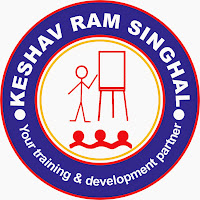A checklist is a list of things that can be checked off as completed or noted. When we certain steps to do for a work or process, we make a list of all of them and we check them off as we accomplish each of them. A checklist is a type of informational job aid used to reduce failure by compensating for potential limits of human memory and attention. It helps to ensure consistency and completeness in carrying out a task. Check-lists are simple form of risk identification technique that provides a listing of typical uncertainties which need to be considered. Check-lists are developed usually from experience - either from previous risk assessment result or from past failure result. A check-list can be used to determine hazards and risks. It can be used to assess the effectiveness of the controls applied. Check-lists can be used at all stages of the life cycle of a product/service or system. They may be used independently or as a part of other risk assessment techniques. A well designed check-lists may be used by non-experts and help ensure that common problems are taken care.
Typical daily checklist for boiler maintenance may be as under:
- Inspect around and under the boiler equipment for leaking water
- Ensure that the area around the boiler equipment is free of materials that may cause obstruction
- Check and ensure temperature readings are within the designed range
- Check and ensure pressure readings are within the designed range
- Watch closely all display panels and ensure no error codes or service codes
- On watching any error codes, ensure to send for service
- Ensure vent termination is not blocked or obstructed
- Inspect and ensure the combustion air opening with no blockage
- Always listen closely for any unusual noises or vibrations
To prepare a checklist for a particular process, make a small team of identified people who should be asked to prepare check points of the known issues that can affect conformity of the product/service (risks) and have the ability to enhance customer satisfaction (opportunities).
For writing of a checklist, the initial process is to carry out a thorough investigation of the task to accomplish. A good checklist starts with a thorough investigation into what and why of whatever it is you are trying to accomplish. Understand objectives of what you want to accomplish. Before you start making your checklist, you must understand what you want to accomplish. Do some research. Find out what others are doing. Write down all points. Get everything documented what you want to accomplish. Brainstorm on your own each point of the process and note down them. You must know the value of each task. Write down in simple language to include a fully detailed description by organizing all your points.
Thanks,
Keshav Ram Singhal
Organizations may contact for conducting in-house training program on (i) 'ISO 9001:2015 QMS Awareness', and (ii) 'Applying risk-based thinking'.

No comments:
Post a Comment